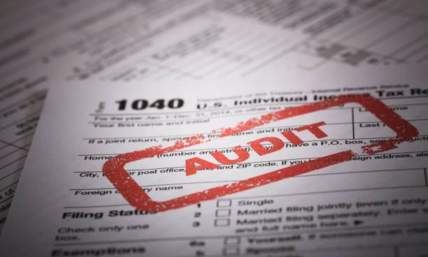How Much Does One Person Spend on Groceries a Month? - Full Guide
How much does one person spend on groceries each month?
It’s no secret that grocery spending can quickly eat up your budget, as well as make you go over your budget - even when you are trying to stick to one.
Because of this, it is even more important to know what you are spending on groceries on a regular basis, and how to budget grocery spending more effectively.
Since you are here, you are obviously wondering what the average person spends on groceries a month. You might be trying to figure out a solo grocery budget for yourself, or trying to work out how much a household should spend on groceries overall.
Whichever it is, this simple guide explains everything you should know about grocery budgeting, including the average grocery cost for a single person, how to budget groceries for one person, and need-to-know budgeting tips.
So, without further ado, let’s jump in.
Also read: How to Provide Proof of Income
- What Does Groceries Include?
- What is the Average Cost of Groceries Per Month?
- How Much Does One Person Spend on Groceries a Month?
- How Much Should a Single Person Spend on Groceries?
- How Do You Budget for Grocery Shopping?
- Budget Grocery Shopping Tips
- How Much Should You Budget for Eating Out?
- What is the 50 30 20 Budget?
- Conclusion
What Does Groceries Include?
First of all, what does grocery shopping include, exactly? Or what are grocery items?
This might not be as clear as it may initially seem. And to make sure we can budget groceries effectively, it is important to know what groceries encompass.
Groceries typically refer to food and drink bought from grocery stores, also called supermarkets.
The thing is, supermarkets can sell a wide range of items, including medication, cosmetic products, entertainment products, household items/housewares, and more.
So, while you may include these in your shopping buggy, these should theoretically, and ideally, not be included in your grocery budget - especially if you want to budget groceries effectively.
Also read: Can You Cash a 2-Year-Old Check?

What is the Average Cost of Groceries Per Month?
Wondering what the average monthly cost of groceries is?
Of course, this is going to depend on whether the groceries are being bought by a single person or for a household of several people, i.e., a family.
Regardless, the stats are these:
The average household spends just over $400 a month on groceries. This is the average household, so we’re looking at two to three household members - technically two adults and one child.
Per week, this works out at $100 on groceries. This is a fairly reasonable amount, accounting for the average diet and consumption of food on a daily basis.
If you are spending a lot more than $400 a month - for a household of two to three members - you could be spending more than you need to.
Also read: What is the average credit score?
How Much Does One Person Spend on Groceries a Month?
The main question: how much does one person spend on groceries a month?
In America, a single person spends an average of $200 per month on groceries. While this might seem a lot (in comparison to the average household spend, detailed above), the actual number ranges between $150 and $350.
Why does the number vary so much?
This can be due to a number of factors, most notably the fact that single people (people living alone) can have more disposable income, and are more flexible in terms of budget due to generally being younger.
Remember: the average household of 2-3 people spends around $400 a month on groceries. This can be looked at as two adults and one child. So, for a single person, the average monthly grocery spend can be more realistically viewed as between $130 and $200.

How Much Should a Single Person Spend on Groceries?
So, you now know how much one person can spend on groceries per month. But how much should a person spend on groceries?
The simple answer is that it depends on the person. Factors include:
-
fixed income (work income/ salary)
-
general food preferences
-
hosting of guests, even if irregularly
-
how flexible the person’s budget is, based on general lifestyle
So, a definitive answer to this question can only be reached by putting monthly grocery expenses into a monthly budget, calculated by monthly income.
As a general rule of thumb, grocery expenditures should ideally make up no more than 10 to 15 percent of fixed monthly income for a single person.
This takes into account all other average living costs and expenses, including rent/mortgage payments, utility bills (including phone and internet), transport, personal spending, as well as savings and debt payoffs.
10-15% budget grocery spend is also a reasonable number when fit into other common budget rules, such as the 30% rent rule, and the 50/30/20 budget.
How Do You Budget for Grocery Shopping?
With the above in mind, how should you budget for grocery shopping?
Using the 10-15% grocery budget, you can then work out what exactly you are spending on when it comes to monthly grocery shopping.
For example, you might find out that you are spending a lot on a certain type of food or drink that should not be taking up so much of your budget.
The key here is to list the most common groceries you buy on a weekly or monthly basis, and then decide which of these groceries are essential or not.
This will enable you to further split up your grocery budget into the groceries you need and do not generally need, effectively helping you to get the most out of your budget.
Also read: How To Find Your Net Worth
Budget Grocery Shopping Tips
It is possible to stretch your grocery budget by being more aware of what groceries you are buying, how much of a certain type of grocery you are spending on, and knowing where and how you can save on groceries.
This might seem obvious, but it is always worth looking for and considering more budget-friendly options for the groceries you are used to buying.
In addition, you should always be on the hunt for discounted items and bargains, which can help to reduce your weekly grocery bill and subsequently your annual grocery expenditure by a surprisingly large amount.
It is also recommended to not go grocery shopping when hungry, as this can lead to putting more items in your shopping buggy based on desire, rather than necessity!
For the same reason, you should always go grocery shopping with a set grocery list, as this will not only help you to budget, but ensure that you do not buy what you do not need.
How Much Should You Budget for Eating Out?
What about eating out? Should eating out be included in your grocery budget?
Eating out at restaurants, as well as ordering takeouts, should ideally be calculated as part of a separate budget - specifically your personal spending.
Personal spending includes shopping (clothes, cosmetics, consumer products), entertainment (concerts and nights out), travel (vacations), as well as restaurant dining and ordering takeouts.
As a result, it is also worth keeping a personal spending budget, or entertainment budget. If calculated as a part of a commonly used budget, such as the 50/30/20 budget, monthly personal spending should make up no more than 30% of your monthly fixed income.
This 30% personal spending budget, as an example, is where you would include eating out at restaurants and ordering takeouts.

What is the 50 30 20 Budget?
Lastly, what exactly is the 50 30 20 budget?
The 50, 30, 20 budget is a widely recommended general budget that accounts for all expenses, splitting living costs, personal expenses, and savings into 50%, 30%, and 20%, respectively, calculated by fixed monthly income.
Broken down, living costs (50%) include rent and mortgage payments, utility bills, groceries, transportation, and general health expenses.
Personal spending (30%) includes shopping (clothes and consumer products), vacations, restaurants and takeouts, and any form of entertainment, such as cinema, concerts, etc.
The final 20% includes savings, investments, and debt payoffs. However, this obviously does not apply to everyone. While saving a monthly amount is widely recommended, it is also optional.
The 50 30 20 budget rule is a simple, yet commonly used, budget that accounts for the average lifestyle and cost of living. Of course, it can also be modified slightly to suit personal expenses.
For example, some people might not spend that much on entertainment, opening up more of a budget for living costs and savings. Others might not put that much importance on saving, allowing a bigger budget for living costs and personal spending.
Conclusion
To conclude, a single person can spend, on average, anything between $150 and $350 on groceries per month. And, as a general rule, a single person should spend no more than 10-15% of their fixed monthly income on groceries.
These numbers are based on average living costs and can vary depending on food preferences, hosting of guests, and flexibility of budget based on general lifestyle.
Groceries account for all food and drink expenses, but do not include eating out at restaurants and ordering takeouts. These are ideally included as part of a separate budget that manages personal spending and entertainment.
When you are doing your budgeting for your groceries it would be worthwhile to use your pay stub to find out your fixed monthly income. Our pay stub maker will ensure that your pay stubs are of a high quality.















